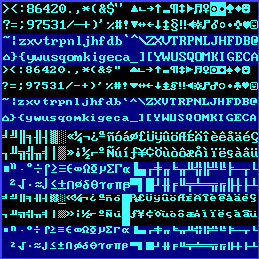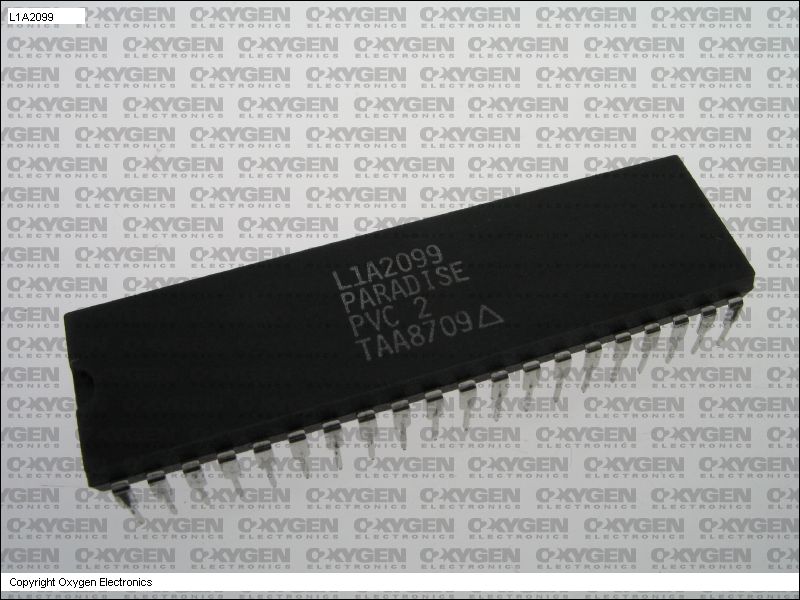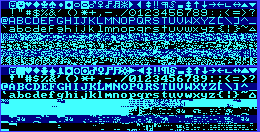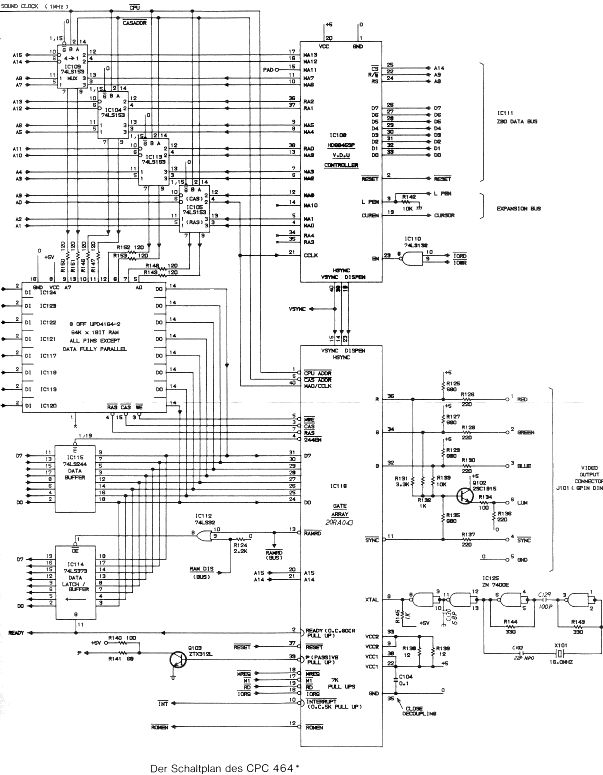Chuck(G)
25k Member
Much easier to get an 8088 XT clone and substitute a V20 CPU for the 8088. The V40 uses the same core, just adds on-chip peripherals. And you get the benefit with an XT clone of strict PC compatibility, unlike your board.
I don't think so... I find this your plan rather hard for me. I've fogotten when I've seen 8088 XT clone last time. :roll:Much easier to get an 8088 XT clone and substitute a V20 CPU for the 8088.
I've tested it with FontEd - it's really a characters generator:iLavr said:The second IC60 EPROM seems to be a characters generator.

I don't think so... I find this your plan rather hard for me. I've fogotten when I've seen 8088 XT clone last time. :roll:
Ouagadougou??! :roll: :roll: :roll: Horror & nightmare!!! (And I hurry to google it!) Oh! "Ouagadougou, Burkina Faso" :lol: :lol: :lol:Of course, I don't know your location--it could be Ouagadougou, ...
Thanks! And specail thanks for help! :DAt any rate, have fun!
Have u your Ampro electrical schematic diagram?... I was going to suggest that the mobo is in reality an sbc. It has a v40 - just like my Ampro Little Board/PC, or whatever the exact designation was. It also has Vadem chips, just like my Ampro.


I would hope and suspect that w/a Paradise chip/set, it would be a largely compatible machine. Don't be put off by the v40 or other bizarre looking glue.
Can u give me an advice where can I have a look on Commodore PC-1, the Paradise Mono/CGA card (PVC2) or may be Zenith easy PC schematics?It's the CGA/MGA support circuitry for the 6845. You'll see the same chip in the Commodore PC-1 and on the Paradise Mono/CGA card (PVC2). Basically, you take a 6845, a PVC2 chip, a character generator ROM and a small handful of SSI TTL and you have a graphics adapter.
I suppose Paradise Video Chip 2 (PVC2) in the Paradise Mono/CGA card plays the same role,It's the CGA/MGA support circuitry for the 6845. You'll see the same chip in the Commodore PC-1 and on the Paradise Mono/CGA card (PVC2). .

Do you figure that the DMA is compatible for the floppy drives? Or the memory refresh? How about the serial port? It's closer than an 80188, but still isn't quite an 8088 box.
Yes, I've looked at the Tandy 2000 and it fails miserably in low-level compatibility. Believe me, I've been there.
If I'll found him alive, I'll try to make something like this:Now I'm thinking about soldering the power connector to it and may be NEC V40 is still alive? :wink:

The point is you _can_ get very close. Some vendors labored to do this. Why we can only ask.
